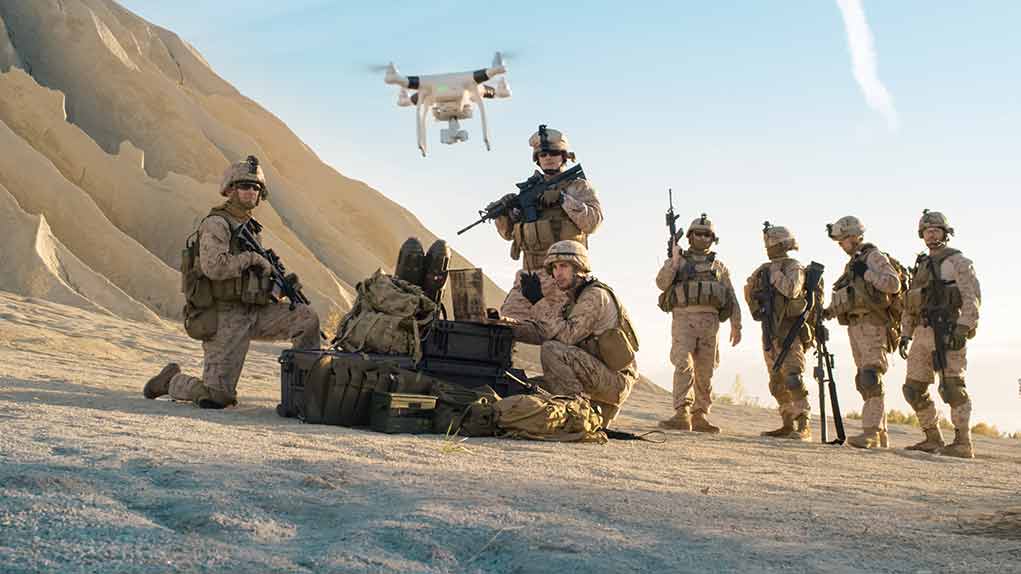
Mysterious drone attacks have targeted military bases across Iraq with US personnel, raising fears of a broader regional conflict as investigations point to potential Iranian-backed involvement amid escalating Middle East tensions.
Key Takeaways
- Multiple drone strikes have hit radar installations at Iraqi military bases, including locations housing US troops
- Iraq has desperately attempted to remain neutral in regional conflicts, closing its airspace and expressing concerns to neighboring countries
- A significant attack targeted an Iran-backed militia headquarters in Baghdad on January 4, 2024
- No group has claimed responsibility for the attacks, deepening geopolitical uncertainty
- These incidents come amid heightened tensions between Iran, Israel, and the United States
Escalating Pattern of Drone Attacks
The security situation in Iraq has deteriorated significantly with a series of sophisticated drone attacks targeting military bases across the country. Intelligence reports indicate these precision strikes have specifically targeted radar installations at facilities where US personnel are stationed. The most brazen of these attacks occurred on January 4, 2024, when drones struck an Iran-backed militia headquarters in Baghdad, demonstrating the attackers’ ability to hit high-value targets with minimal warning. Iraqi security forces have struggled to intercept these unmanned aerial vehicles, which appear to be using advanced guidance systems to evade detection until moments before impact.
These attacks come at a particularly sensitive time as Iraq has been making concerted diplomatic efforts to avoid being drawn into the widening regional conflict. The Iraqi government has taken the extraordinary step of closing its airspace and has communicated its concerns directly to Iran and other neighboring nations. Despite these precautions, the country appears to be increasingly caught in the crossfire of competing regional powers, with its sovereignty repeatedly violated by unauthorized military operations within its borders.
— S2 Underground (@s2_underground) October 1, 2024
Investigation Challenges and International Response
Investigators face significant obstacles in determining the origin of these attacks, as the perpetrators have left minimal evidence and no organization has claimed responsibility. This calculated ambiguity appears designed to maintain deniability while achieving strategic objectives. Security analysts have noted similarities between these strikes and tactics previously employed by Iran-backed groups throughout the region. President Trump has been briefed on the situation and has reportedly directed military commanders to enhance protection measures at all US facilities in Iraq while maintaining readiness for potential response options if American personnel are harmed.
The international community has expressed growing concern about these developments, with many nations calling for restraint from all parties. However, the lack of concrete attribution has complicated diplomatic efforts to address the root causes of these provocations. The United Nations Security Council has scheduled emergency consultations but has yet to take definitive action. Meanwhile, regional powers are closely monitoring the situation, with some appearing to position themselves for possible further escalation if investigations reveal direct state involvement in the attacks.
Geopolitical Implications and Strategic Considerations
These drone attacks represent a dangerous new phase in the ongoing shadow war between Iran and its proxies against American interests and allies in the Middle East. Security experts believe these strikes may be part of a coordinated campaign to pressure US forces to withdraw from their remaining positions in Iraq, a longstanding objective of Tehran and its aligned militias. The timing of these attacks, coinciding with Israeli air operations over Iran, suggests possible coordination or at least a shared strategic agenda among anti-American forces in the region. This development is particularly concerning as it indicates an evolving capability to conduct precision strikes against hardened military targets.
For American policymakers, these attacks present a complex challenge that requires a calibrated response, one that deters further aggression without triggering a wider conflict. Military analysts note that drone technology has created an asymmetric advantage for non-state actors and their state sponsors, allowing them to conduct attacks with plausible deniability. The Biden administration’s previous policies of appeasement toward Iran created conditions for this escalation, and President Trump’s team now faces the difficult task of reestablishing deterrence while maintaining focus on higher strategic priorities. How this situation evolves in the coming weeks may significantly shape the security landscape across the entire Middle East.















